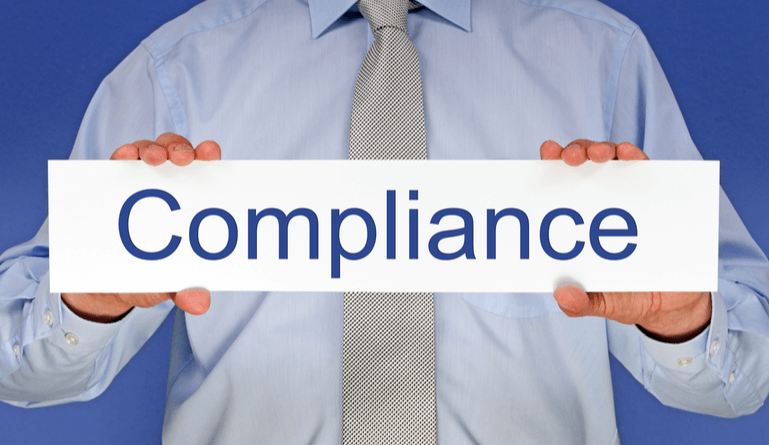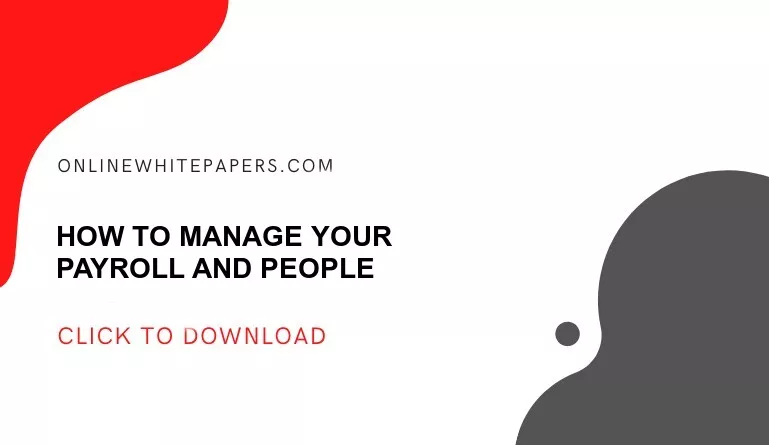“It takes less time to do things right than it does to explain why you did them wrong.” This adage is a caution statement for those organizations who opt to compromise on employee compliance in their internal process and procedures and later repent for the negligence. Compliance should be at the crux of an organization’s policies and procedures. When companies disregard the compliance component while establishing corporate regulations, they risk needlessly incurring penalties and retention, both of which are costly to their finances and reputation.
According to research reports, almost 40% of organizations surveyed(1) indicated their corporate boards are involved in the governance and supervision of their ethics and compliance program.
Policies and procedures following laws and regulations form an integral part of any company’s culture and provide a plan for day-to-day operations. This conglomeration between the company policy and compliance with legislation enables decision-making, streamlines the internal process, enforces internal controls, and supports legal risk management. Such compliance-based internal policies and procedures, referred to as corporate compliance, intend to prevent and detect violation of relevant laws, regulations, rules, and ethical standards by the employer, employees, agents, and others.
It is noteworthy that over 75% of organizations include ethics and compliance in employee evaluations, whereas 25% do not(2).
A loosely formatted compliance process or non-compliance leads to financial losses, security breaches, license revocations, business disruptions, poor employee morale, trust erosion, and a tarnished reputation.
According to a Gartner poll, 67 percent of employees(3) who demonstrate superior discretionary effort and have witnessed noncompliance have actively sought employment elsewhere. In comparison, just 26% of employees(4) who put up better discretionary effort but have not witnessed noncompliance do so. Therefore, it is critical to ensure that its policies and procedures are compliant with current legislation.
Maintaining the constantly changing employee compliance requirements may be a looping process for HR. Hence, organizations can build employee compliance by deploying talent management tools besides compliance document management tools to track compliance updates and save time manually tracking each update.
( Also Read: What is HR Compliance? )
Also, a designated compliance officer is mainly responsible for overseeing and implementing the compliance program in an organization with the help of a compliance committee made of a diverse group of leaders from throughout the organization, including risk management and human resources.
The pointers which help in improving the organizational culture by implementing the compliance provisions are as follows.
-
Hiring Process Compliance
The employee lifecycle begins with the recruitment process. Hiring compliance is the process of attracting, selecting, and appointing suitable candidates for jobs in an organization while adhering to internal policies, best practices, and state and international laws.
Various components such as data security, integration security, GDPR/privacy laws, scoring & weighting, and candidate evaluation are the components of recruitment compliance.
The platform bundled with hiring and talent management tools assists HR to stay compliant during the interview process. They guide the interviewer through interview questions and proscribe them from asking illegal interview questions. Hiring platforms maintain a repository of candidates and help perform background checks of the candidate and testify employee’s credibility.
-
Payroll & Tax Compliance
Payroll compliance is adherence to all federal, state, and local rules governing employee pay. Payroll tax withholding, filing, and reimbursement may appear complicated, but they are tasks that employers must execute correctly to stay in compliance with payroll taxes.
Automated taxes and reporting can help managers handle the complexities of tax compliance. Tax reporting automation platforms such as RPA(5) prepares and files tax returns with only a few clicks, saving time and avoiding complications.
The platform is designed to address manual errors in tax compliance, tax calculation cycle time is reduced, and calculation of income taxes with precision.
The dealership is considered fully compliant with taxation needs having an integrated payroll and personnel management solution when it includes electronic IRS filing and pays withdrawals, quarterly online tax statements and W2 previews, and new hire reporting.
-
Affordable Care Act (ACA) Compliance
The Affordable Care Act (ACA), adopted in 2010, is a comprehensive reform bill that offers health insurance coverage for the uninsured and controls the health insurance market. This regulation is mandatory to be included in employee welfare and benefits.
As per the Affordable Care Act, health insurance plans must cover a set of ten kinds of services. Doctors’ services, prescription drug coverage, pregnancy and childbirth, mental health treatments, inpatient and outpatient hospital care, and other services are among them.
All organizations having 50 or more full-time equivalent workers (FTE) must provide health insurance to a minimum of 95 percent of the full-time employees and the dependents up to 26 under the Affordable Care Act (ACA) or pay a tax. APS platform(6) is an affordable care act compliance software that can manage all ACA workflows in one place.
-
Consolidated Omnibus Budget Reconciliation Act (COBRA) Compliance
The Consolidated Omnibus Budget Reconciliation Act (COBRA) is a primary federal law implemented in 1985 that allows some employees and their families to keep their group health insurance coverage after a job loss or other qualifying event. This law outlines how employees and their family members can opt for continued health care coverage through their employer for a limited period after range is lost for various reasons, such as reduced hours worked voluntary or involuntary job loss, divorce, death, or other life events. Implementation of automated or conventional COBRA compliance instills trust in employees.
-
Equal Employment Opportunity Commission (EEOC) Compliance
These laws protect employees and job applicants against employment discrimination which involves unfair treatment because of race, color, religion, sex (including pregnancy, gender identity, and sexual orientation), national origin, age (40 or older), disability, or genetic information.
It encompasses harassment by managers, co-workers, or others in the workplace, because of race, color, religion, sex (including pregnancy), national origin, age (40 or older), disability, or genetic information. It covers the rejection of a reasonable workplace accommodation that the employee needs because of religious beliefs or disability. It supports retaliation because the employee complained about job discrimination or assisted with a job discrimination investigation or lawsuit.
The Equal Employment Opportunity Commission (EEOC) inspects complaints of workplace discrimination. Instead of wasting resources and risking mistakes manually managing EEOC compliance, partnering with an integrated people management solution gives HR access to all the tools and tracking resources needed to be compliant.
-
Fair Labor Standards Act (FLSA) Compliance
The Fair Labor Standards Act (FLSA) regulates minimum wages, overtime pay, recordkeeping, and youth employment in the private sector and federal, state, and local governments.
Because the Department of Labor requires that each employee be paid at least minimum wage, if a dealership’s service department has a sluggish week, the company must pay staff a “minimum wage makeup” to comply with labor rules.
The FLSA incorporates employees of businesses with annual gross sales or business of $500,000 or more and employees who are individually protected by the legislation because they are involved in interstate commerce or manufacturing goods for trade.
This compliance saves the employer particularly from the risk of running an incorrect payroll to unknowingly paying workers below minimum wage to waste valuable time updating a manual spreadsheet; flag time calculations can lead to countless headaches for dealers.
-
E-Verify Compliance
E-Verify automation and integration can ensure that all new hires coming from the recruiters have employment verification, saving you money and avoiding fines. E-Verify ensures perfect correctness and compliance rather than having new workers fill out paper forms to verify their identity. It also keeps the dealership time by requiring employees to fill out the papers on their own before their first day on the job, rather than doing so while on the job.
Compliance automation can help the dealership run more smoothly while avoiding fines, litigation, and other legal action.
E-Verify validates an individual’s identification and job eligibility by comparing information on the I-9 form to the Social Security Administration records and the United States Citizenship and Immigration Services data repository.
Final Thought
If a company fails to make a proper compliance strategy allied with processes and procedures, it may incur significant fines and penalties. Employers who violate any of the compliance norms may be forced to close their ventures.
Establishing a solid compliance culture requires leadership involvement as well as the use of a third-party tool. Top management’s quick response helps to mitigate compliance strategy flaws.
In conclusion, compliance is essential if the company wants to develop and communicate effective solutions to reduce and manage risk throughout the organization. Compliance promotes a climate in which employees are comfortable reporting improper conduct. It determines how ethics and compliance may assist the organization in meeting its business goals in a timely and efficient manner.








